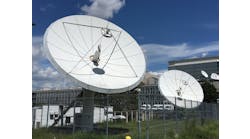Wi-Fi Plays a Critical Role in 5G’s Success
Convergence between Wi-Fi and 5G access technologies is critical for enabling new breed of services, applications, and experiences, such as Industry 4.0, AR/VR, Connected Cities, and Edge Computing. That is according to the latest report from the Wireless Broadband Alliance (WBA), developed with input from mobile carriers, Wi-Fi providers, telecom manufacturers, and its own 5G Working Group.
The report, 5G and Wi-Fi RAN Convergence Whitepaper, provides a breakdown of the current standards and key business opportunities for operators. Businesses and operators stand to gain a great deal from the seamless integration of Wi-Fi and cellular access in the 5G networks, including:
• Public & Enterprise Wi-Fi: Increases deployment possibilities and scenarios for operators and access providers, allowing them to deliver a more seamless user experience and maintain better visibility and overall control of the networks.
• Industry 4.0: The potential use of both 5G NR and Wi-Fi access dramatically improves connectivity and traffic steering on the factory floor across both accesses, facilitating greater utility of artificial intelligence and machine learning.
• Smart City: 5G NR and Wi-Fi access can interoperate to create uninterrupted connections, and traffic to data-hungry edge applications can be more easily managed.
• At Home: The availability of both accesses allows a mix of traffic options in residential applications to boost connectivity and provide a more well-rounded end-user experience.
• Wi-Fi-Only Devices: Convergence enables the availability and reach of 5G services and applications to more devices in many more locations with the support for Wi-Fi only devices.
InvisiLight® Solution for Deploying Fiber
April 2, 2022Go to Market Faster. Speed up Network Deployment
April 2, 2022Episode 10: Fiber Optic Closure Specs Explained…
April 1, 2022Food for Thought from Our 2022 ICT Visionaries
April 1, 2022The convergence of Wi-Fi 6 & 6E and 5G is a win-win scenario for end users, cellular, and Wi-Fi players. The continued development of 5G and Wi-Fi 6 & 6E networks presents almost limitless potential for industry 4.0, residential connectivity, connected smart cities, and more, but convergence is critical for all parties if we are to truly capitalize on the potential this technology has to offer.
This new paper provides a path forward for regulators and industry bodies that stand to benefit all, giving stakeholders the ability to cost effectively improve performance while also retaining control and maximizing their return on investment.
Critical Action Areas
The report investigates technologies which enable end-user 5G services over Wi-Fi access. It highlights several critical action areas for industry bodies and operators related to supporting trusted WLAN integration with the 5G core and enabling QoS differentiation for 5G flows over WLAN access.
The specific enhancements and suggested actions for the industry are broken down into 5 distinctive key areas:
• 5G and Wi-Fi Convergence Architecture
• Multi-Access Functionality for Access Traffic Steering, Switching and Splitting (ATSSS)
• End-to-End QoS (Quality-of-Service)
• Policy Interworking and Enhancements Across 5G and Wi-Fi
• Support for Wi-Fi-only devices
Potential convergence architecture enhancements include a tighter coupling between Wi-Fi access and the 5G gateway functions for trusted WLAN. It highlights interworking requirements between 3GPP-defined Access Traffic Steering, Switching and Splitting (ATSSS) multi-access functionality, and existing solutions adopted on device platforms.
Providing QoS differentiation within WLAN is needed for 5G flows and analyzes the issues associated with mapping 5G QoS to Wi-Fi QoS. Policy interworking aspects across 5G system and Wi-Fi access are also critical alongside the considerations for enabling an operator to provide differentiated 5G service using both cellular and Wi-Fi access as part of a converged service bundle.
The paper further explores how to support Wi-Fi-only devices without SIM capability in the 5G system. It highlights the need to define non-SIM-credential-based authentication methods over WLAN access for private 5G networks.
Addressing proposed enhancements and challenges may further improve the integration of Wi-Fi access in a 5G system, allowing seamless and interoperable 5G services to end users across a wide array of use cases and verticals. The report highlights the standard bodies where this work may be further addressed.
Convergence considerations are under active development by industry regulators and standards bodies, including 3GPP and IEEE, bridging the gap with standards bodies involved in the development of protocols for mobile telecommunications. Operators and providers can reap many of the benefits of 5G and Wi-Fi convergence by implementing the current specifications and by addressing the enhancements and challenges as outlined by the WBA and some of its members.
Howard Watson, Chief Technology and Information Officer at BT Group said, "Historically, cellular and fixed/Wi-Fi services have been delivered and consumed as independent offerings, limiting the service experience for customers. With advances in convergence, the dividing lines are beginning to blur, and that’s great news. Customers can increasingly focus on what they use their connectivity for, rather than how it is delivered. End users and the industry at large stand to gain massively from convergence between Wi-Fi and 5G, but only if we, as operators, infrastructure and device vendors, act together to fully define and deliver these new converged solutions"
As a member of the WBA, BT Group are among those companies poised to benefit early from convergence, because they will have an intimate understanding of the issues involved and how to solve them.
For more information, please email [email protected] or visit https://wballiance.com/. Follow the WBA on Twitter @WBAlliance, and on Facebook and Linkedin.
WBA’s mission is to enable collaboration between service providers, technology companies and organizations to achieve that vision. WBA undertakes programs and activities to address business and technical issues, as well as opportunities, for member companies.
WBA work areas include advocacy, industry guidelines, trials and certification. Its key programs include NextGen Wi-Fi, 5G, IoT, Testing & Interoperability, Roaming and Policy & Regulatory Affairs, with member-led Work Groups dedicated to resolving standards and technical issues to promote end-to-end services and accelerate business opportunities. WBA’s membership is comprised of major operators, identity providers, and leading technology companies, including BAI Communications, CommScope, Facebook, HPE Aruba, Nokia, Orange, Qualcomm, Rogers, Samsung, Shaw, Softbank, Swisscom, Telstra, Telus, and T-Mobile US.
References and Notes
For more information about 5G and Wi-Fi RAN Convergence Whitepaper, visit https://wballiance.com/5g-and-wi-fi-ran-convergence-industry-guidelines-executive-summary/.









